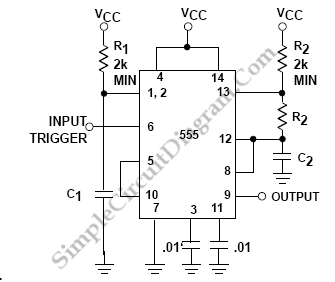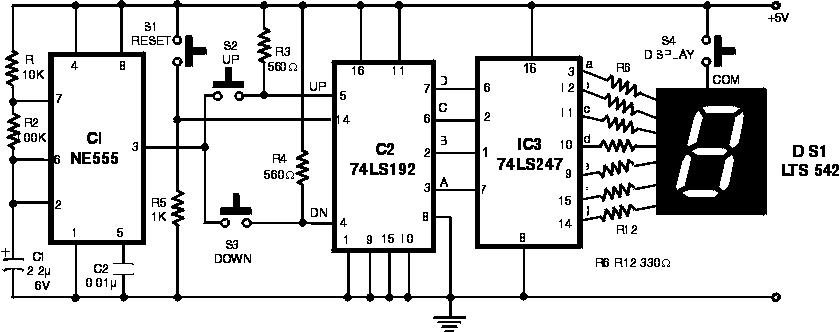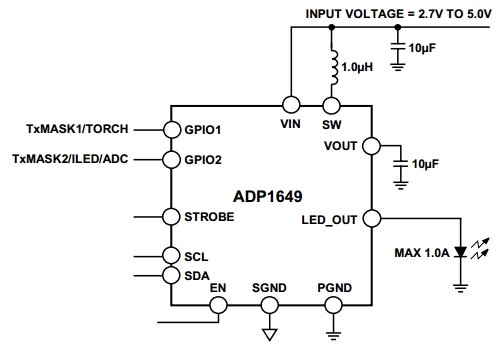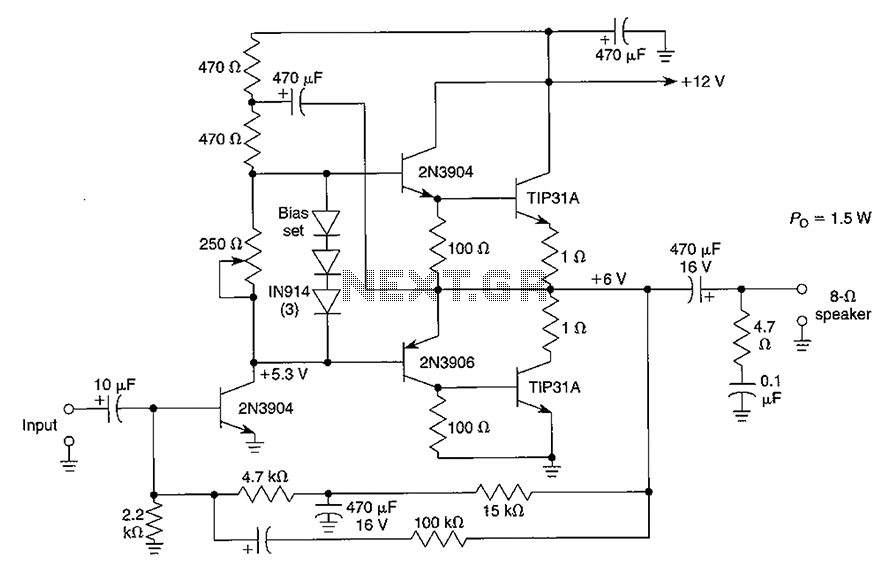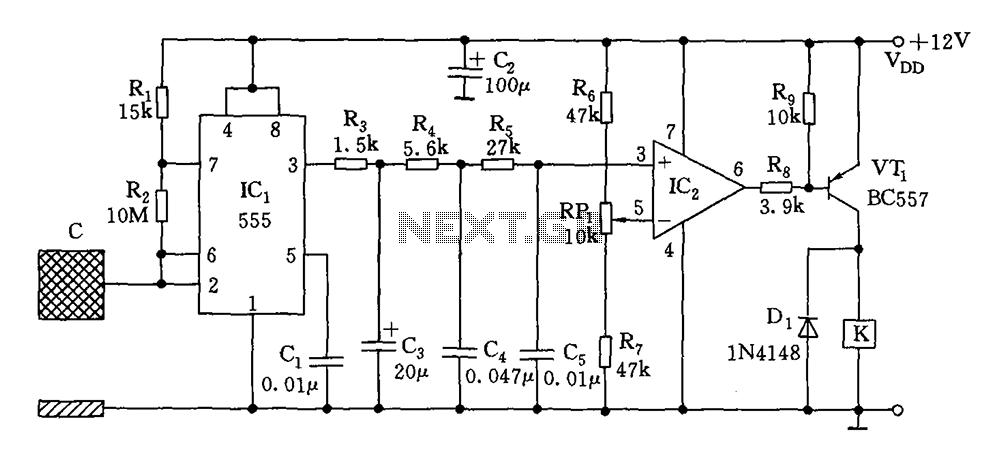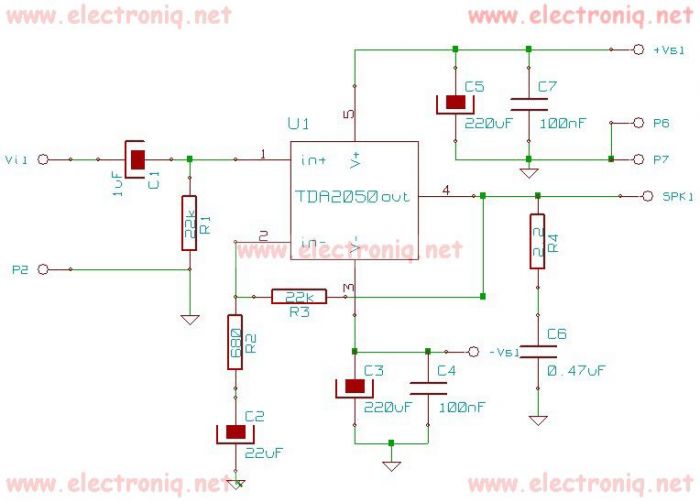
555 tri-color flash circuit diagram ornaments
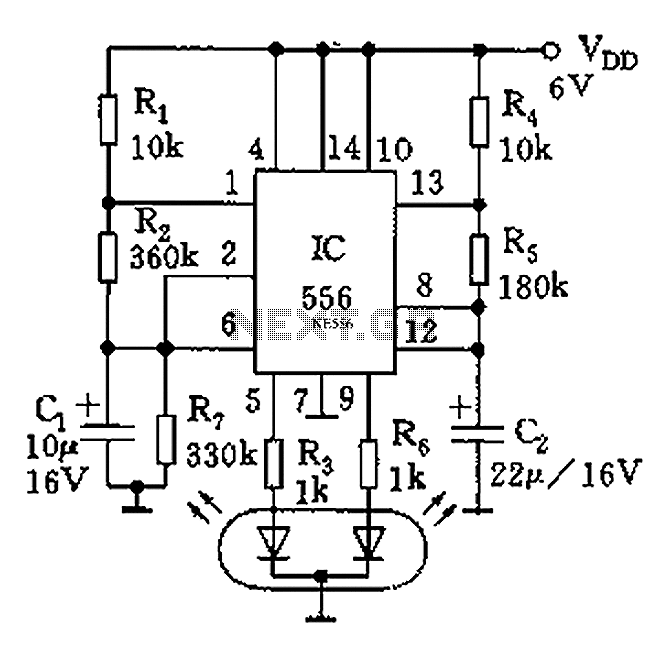
The circuit features a dual-core 556 timer IC and a light-emitting diode (LED) tube. The left half of the IC (556 1/2) comprises resistors R1, R2, capacitor C1, etc., generating a frequency of approximately 2 Hz in a multivibrator configuration. The right half of the IC (556 1/2) includes resistors R4, R5, capacitor C2, etc., operating at around 0.5 Hz in another multivibrator setup. The outputs from pins 5 and 9 control the red and green LEDs, respectively, creating a blinking effect that alternates between red, orange, and green colors.
The circuit utilizes a dual 556 timer IC, which contains two independent timing circuits capable of functioning as astable multivibrators. The left section of the IC is configured to produce a higher frequency output of approximately 2 Hz. This is achieved through the combination of resistors R1 and R2, which determine the charge and discharge time of capacitor C1, thus setting the oscillation frequency. The output from this section can be connected to an LED to produce a blinking red light.
Conversely, the right section of the 556 operates at a lower frequency of around 0.5 Hz. Resistors R4 and R5, along with capacitor C2, are selected to set the timing characteristics for this multivibrator. The output from this section drives a green LED, creating a slower blinking effect compared to the left section.
The outputs from pins 5 and 9 of the 556 IC are connected to the anodes of the respective LEDs. When the left multivibrator output is high, the red LED illuminates, while the right multivibrator output drives the green LED. The alternating blinking of these LEDs results in a visual effect that transitions between red and green, and when both LEDs are illuminated simultaneously, it produces an orange hue.
The choice of component values for resistors and capacitors is crucial for achieving the desired blinking rates and ensuring that the LEDs operate within their specified current ratings. Proper heat dissipation considerations should also be made, especially if the circuit is powered for extended periods. Additionally, the circuit can be further enhanced by incorporating a power supply regulation component to maintain consistent voltage levels for reliable operation. As shown, the circuit consists of a dual-core 556 and the light emitting tube. The left half of the IC (556 1/2) composition R1, R2, C1, etc. frequency of about 2Hz multivibrat or; the right half of the IC (556 1/2) composition and R4, R5, C2 and so on about 0.5 the multivibrator Hz. The output of 5,9 feet respectively drive the red, green light-emitting diode, resulting in red, orange, green three colors that blink of glory.
The circuit utilizes a dual 556 timer IC, which contains two independent timing circuits capable of functioning as astable multivibrators. The left section of the IC is configured to produce a higher frequency output of approximately 2 Hz. This is achieved through the combination of resistors R1 and R2, which determine the charge and discharge time of capacitor C1, thus setting the oscillation frequency. The output from this section can be connected to an LED to produce a blinking red light.
Conversely, the right section of the 556 operates at a lower frequency of around 0.5 Hz. Resistors R4 and R5, along with capacitor C2, are selected to set the timing characteristics for this multivibrator. The output from this section drives a green LED, creating a slower blinking effect compared to the left section.
The outputs from pins 5 and 9 of the 556 IC are connected to the anodes of the respective LEDs. When the left multivibrator output is high, the red LED illuminates, while the right multivibrator output drives the green LED. The alternating blinking of these LEDs results in a visual effect that transitions between red and green, and when both LEDs are illuminated simultaneously, it produces an orange hue.
The choice of component values for resistors and capacitors is crucial for achieving the desired blinking rates and ensuring that the LEDs operate within their specified current ratings. Proper heat dissipation considerations should also be made, especially if the circuit is powered for extended periods. Additionally, the circuit can be further enhanced by incorporating a power supply regulation component to maintain consistent voltage levels for reliable operation. As shown, the circuit consists of a dual-core 556 and the light emitting tube. The left half of the IC (556 1/2) composition R1, R2, C1, etc. frequency of about 2Hz multivibrat or; the right half of the IC (556 1/2) composition and R4, R5, C2 and so on about 0.5 the multivibrator Hz. The output of 5,9 feet respectively drive the red, green light-emitting diode, resulting in red, orange, green three colors that blink of glory.
